The larch ascending
Posted by Richard on UTC 2021-10-24 06:44 Updated on UTC 2021-10-29
For a brief moment in autumn, perhaps only a week or so, larches go from their summer dark green, through pale green and finally to a spectacular palette of intense yellows. A few days more and it's all over, the needles are on the ground and the scrawny, hanging branches of the trees are bare.
In the afternoons on those few golden days, the solitary larches scattered among the dark green pines of the lower forest catch the low sun and light up their surroundings.
On the eastern slopes of the mountain, between about 1,500 metres (5,000 feet) [NB: all conversions are rounded to the nearest sensible value] and the treeline at about 2,000 metres (6,500 feet) the larches have their own forest, the Gôt da Laresch in the Surmiran language.
On this cool and bright afternoon near the end of October the moment of the golden larch has come for this year. It won't last long, so on with the boots and off we go for a gasping, uphill stagger to the golden place where the larches live.
We are starting at 1,300 metres (4,200 feet) above sea level. From here to the treeline at the foot of the mountain we have about 700 metres (2,300 feet) to climb. For the first couple of hundred metres (700 feet) of altitude the larches are in isolated groups of a few trees among the dark conifers of the evergreen forest. Their autumnal yellow against the dark surroundings makes them glow unmissably.
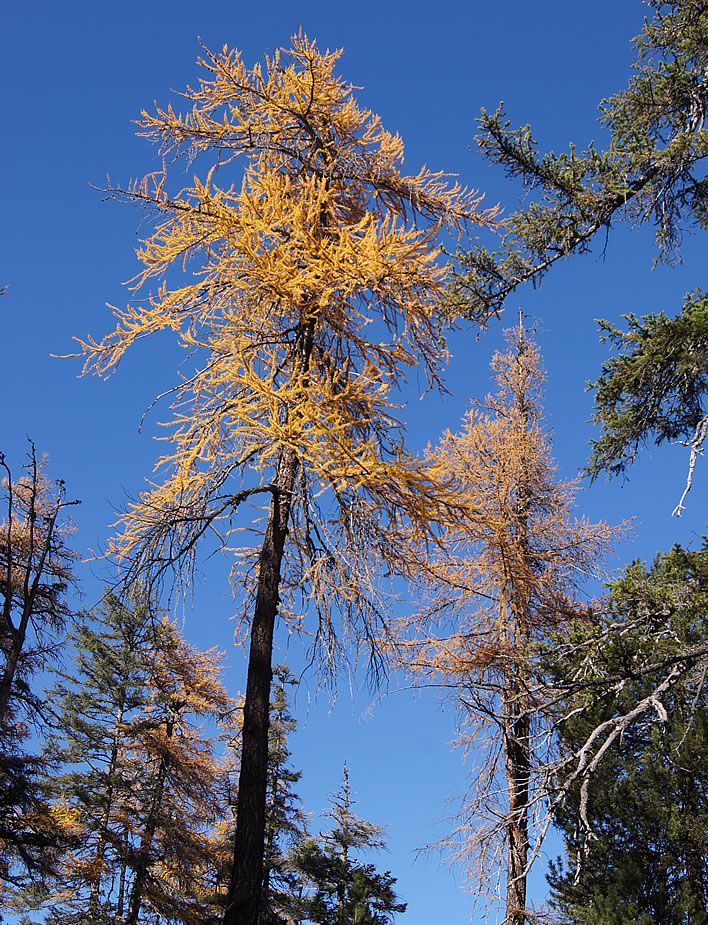
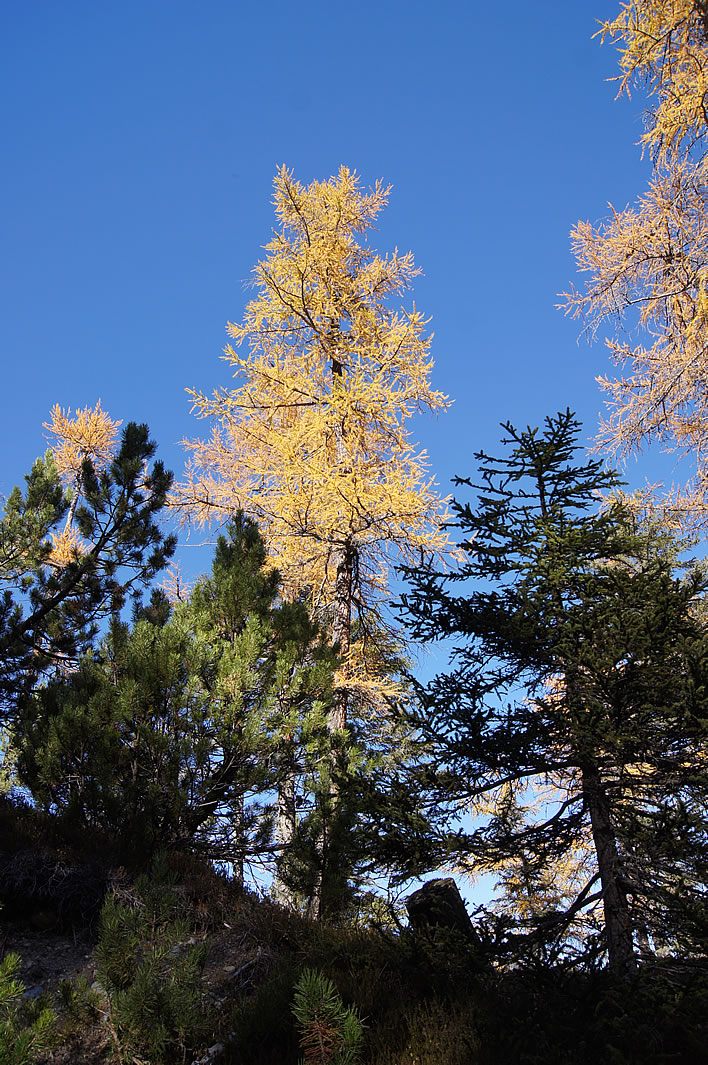
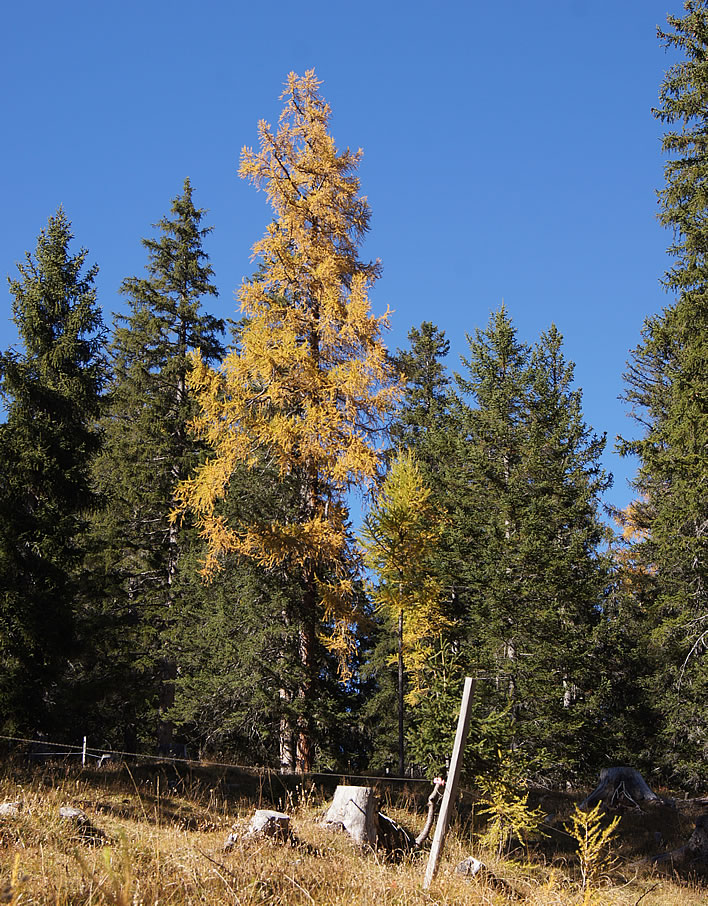
In the afternoons at this time of year, the low sun angle and the particular quality of the autumn light make the larches stand out dramatically.
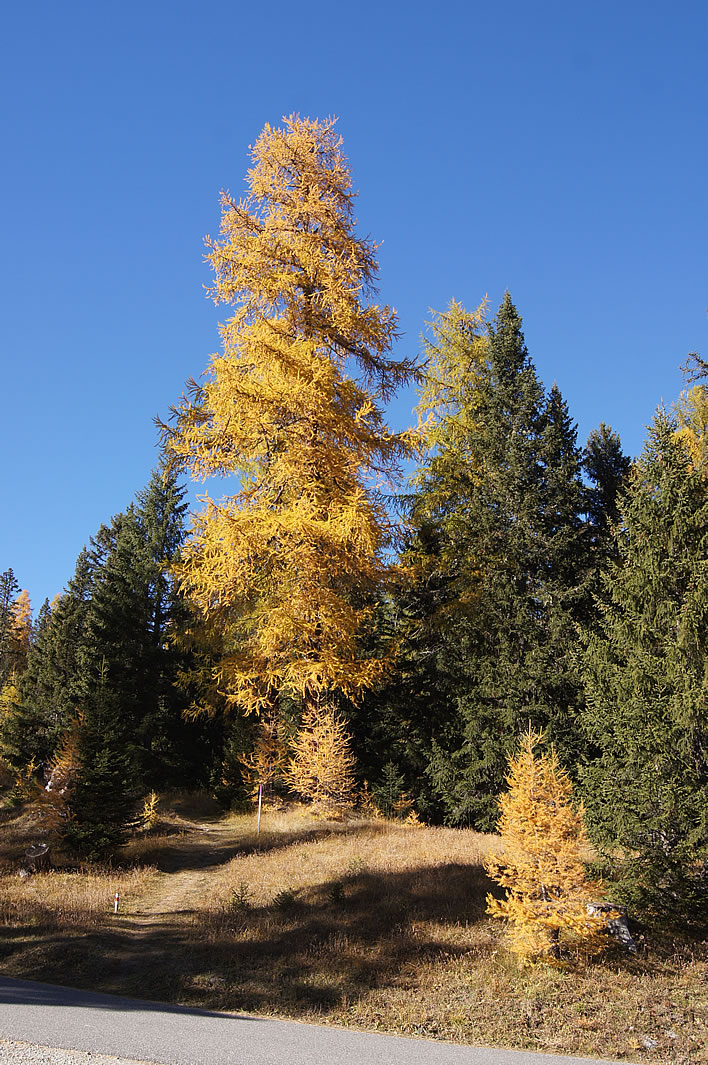
As we continue our ascent the clusters of larches grow larger and more numerous.

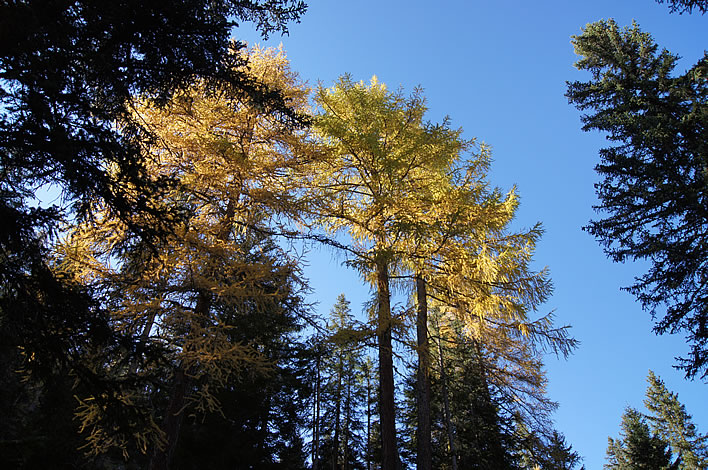
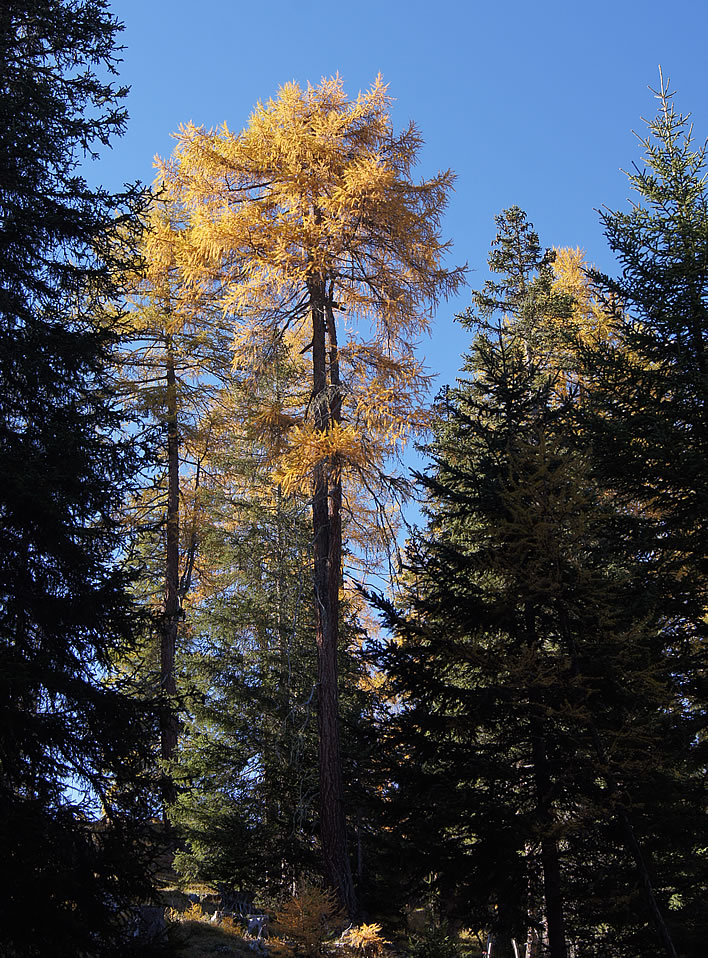
As we approach 1,500 metres (5,000 feet) the larches start to coalesce to form a wood, the pines now are the isolated specimens.
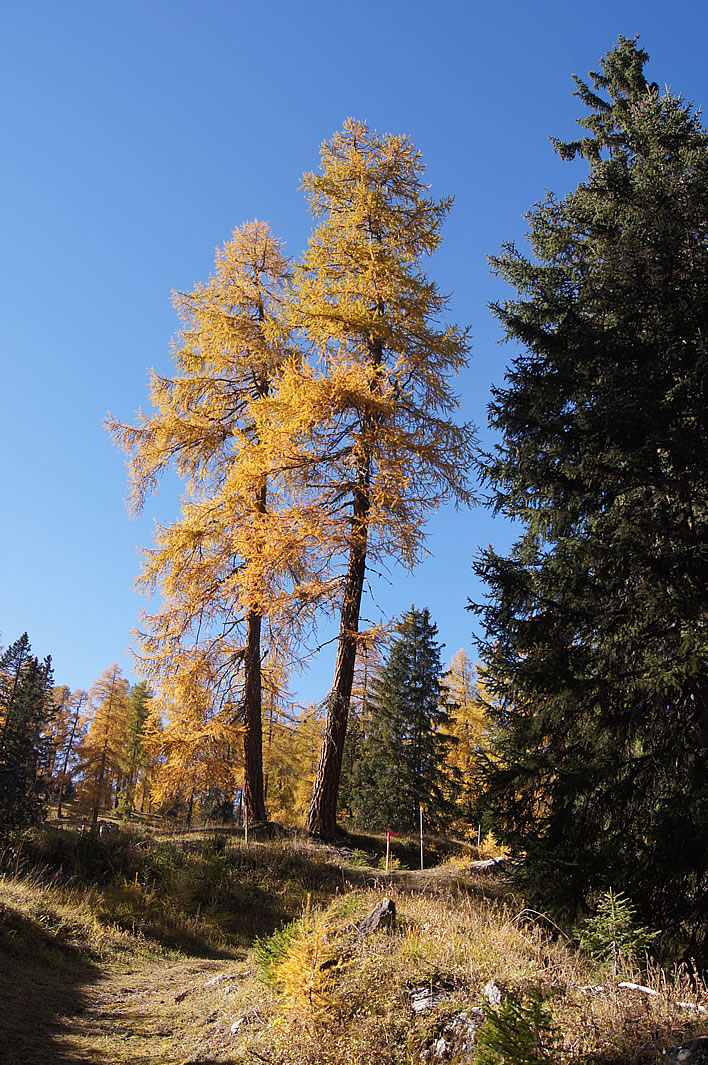

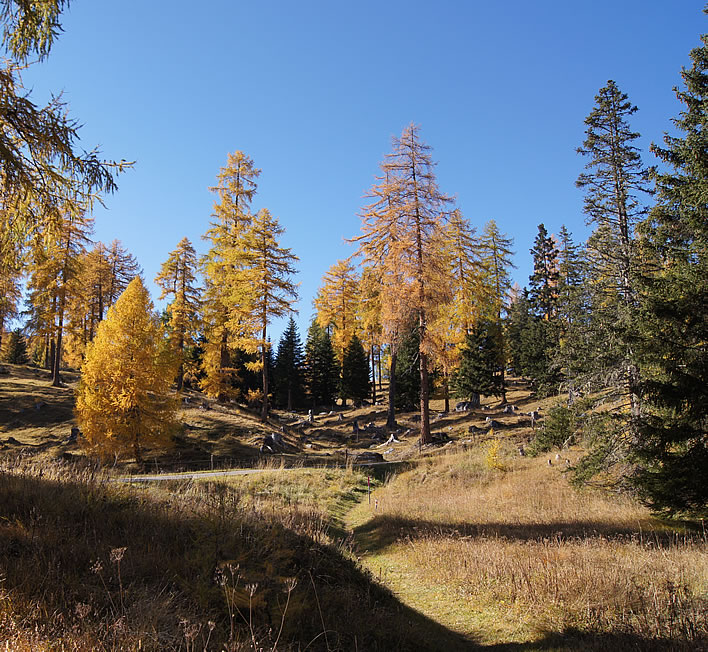

Finally we walk into a clearing on the edge of the larch forest. The forest stretches from just behind us for about 5 kilometres (3 miles) around the lower eastern slopes of the mountain.
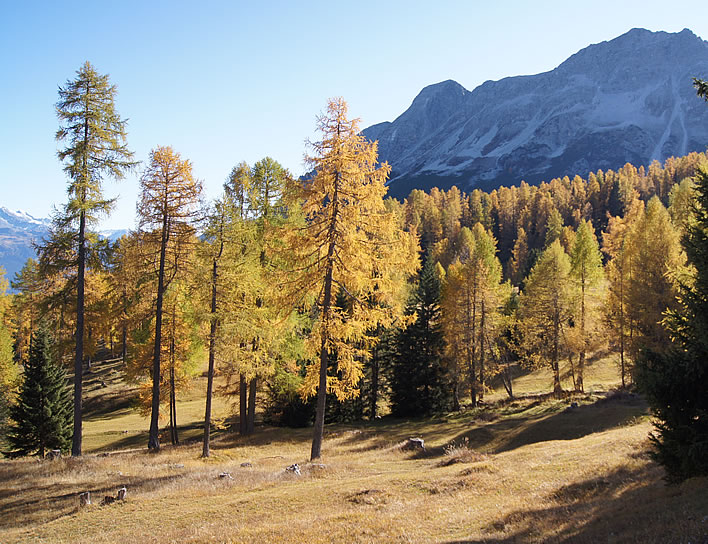
Larches adapt their form to make the best use of the space available. The needles they drop on the ground around their bases emit a gas which inhibits the germination of seeds, including their own. The effect of this is not only to suppress competitors but also to maintain the optimum space around the individual trees.

Where larches have inserted themselves between other species, they form tall and narrow trees which quickly take up the available space and usually tower over the slower growing competition.
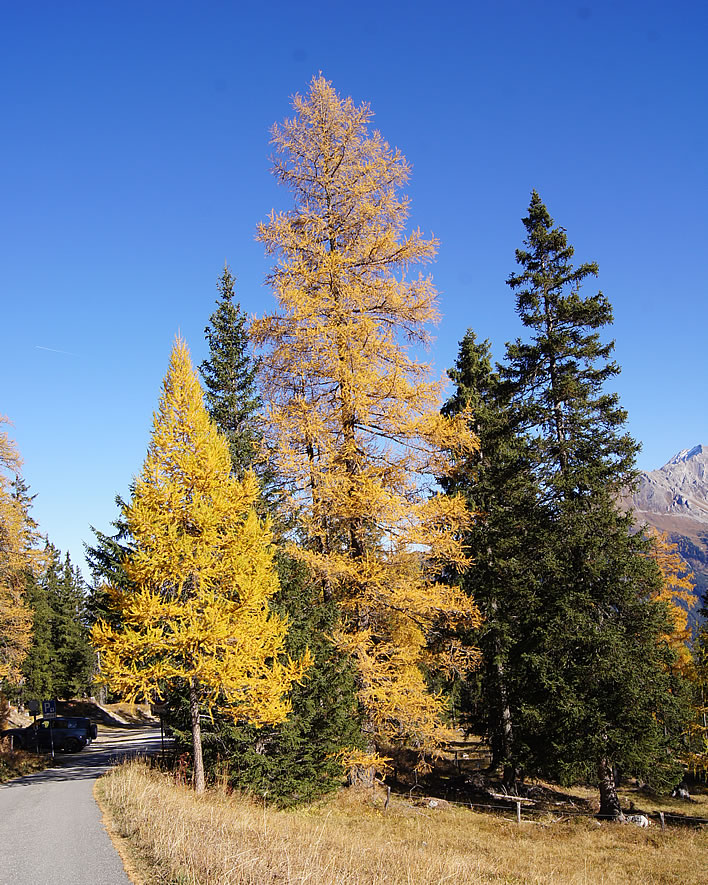
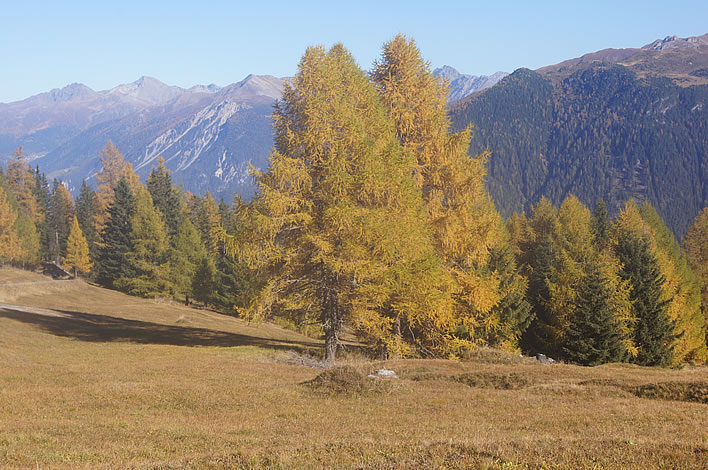
The edges of the larch forest along the eastern side of the clearing.
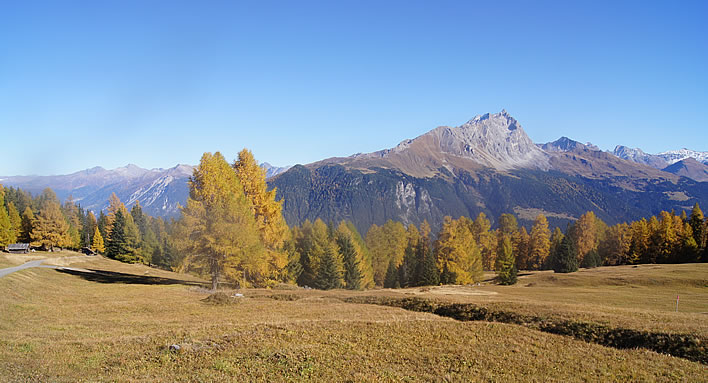
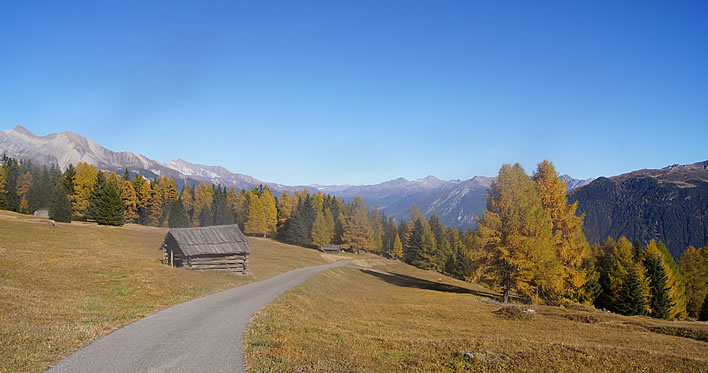
The edges of the forest to the north-east of the clearing.
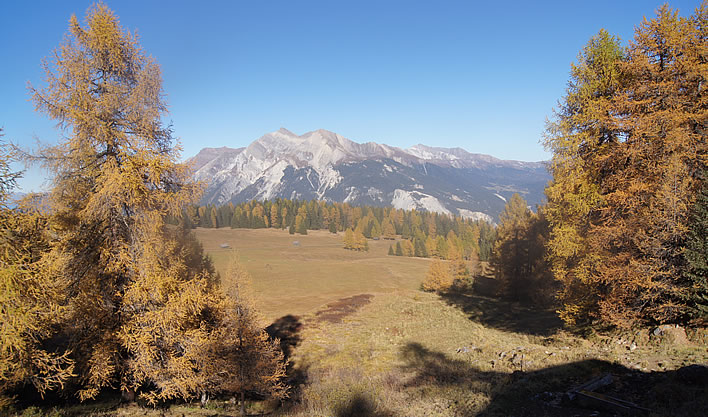
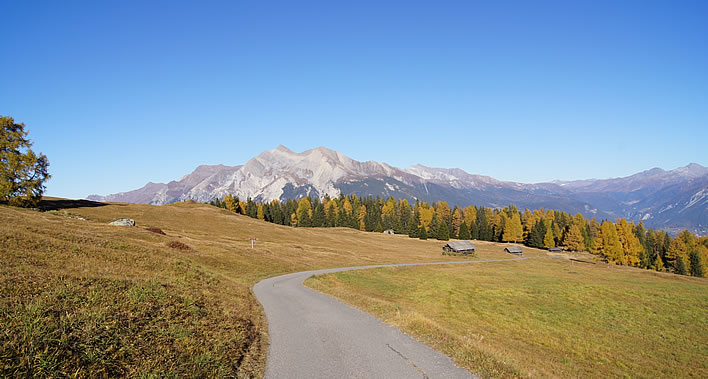
It's late afternoon by now and the sun angle is decreasing rapidly.


The forest on the northern edge of the clearing.
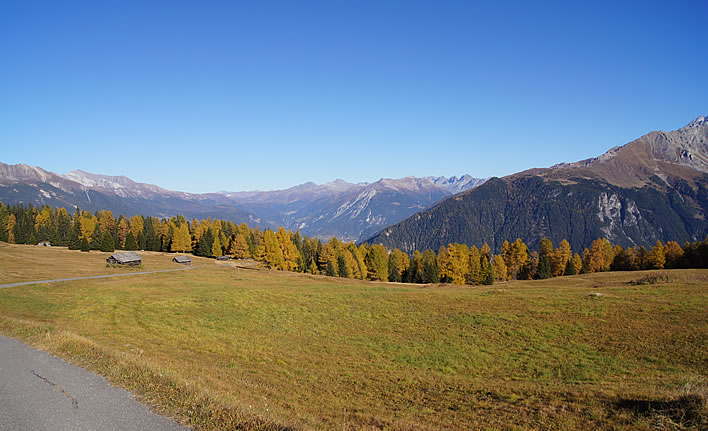
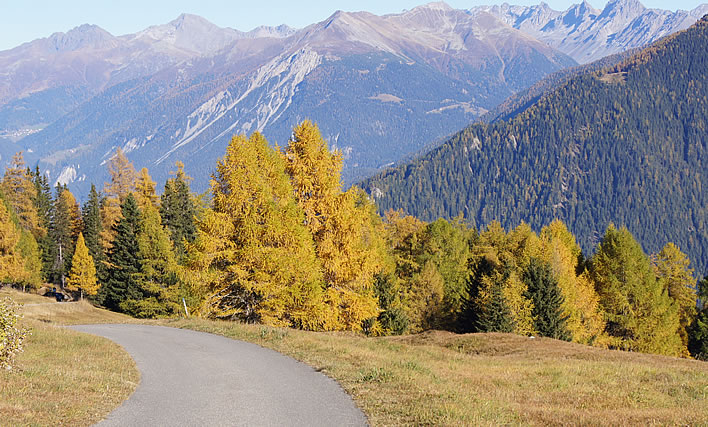
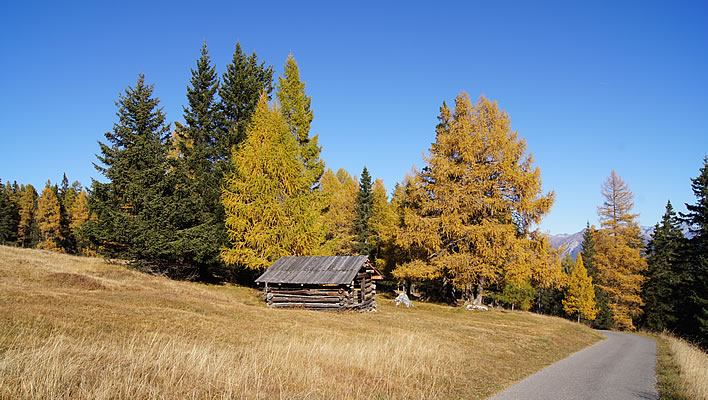
Seen from a distance, in winter the swathe of thin larch branches gives the larch forest a diaphanous, grey-silver colouring from afar; this state lasts into spring, when the diaphanous larch forest contrasts with the fresh greens below it. Larches are late starters – unsurprisingly, given the altitude at which they are growing.
In late spring the swathe goes from grey to an intensifying pale green before the final green of summer arrives. At the right moment in autumn the swathe passes briefly through intense shades of yellow, the needles fall shortly afterwards and the cycle continues.
The time of the yellow glory is brief because, however much we might enjoy it, the larch has no interest in prolonging the time needed for the disposal of its needles. At alpine altitudes, autumn – the interlude between summer and winter – is short. There are already hard frosts up here at 2,000 metres (6,500 feet) whilst the lowlands are basking in their own, longer, autumn glory.
The bottom of the valley here is 1,200 metres (4,000 feet) above sea level. The treeline is around 2000 metres (6,500 feet), so the lapse rate from an altitude gain of 800 metres (2,600 feet) will make the air around 8°C (14°F) colder in the larch forest. Today's walk started with a peaked cap and ended with a beanie. This calculation neglects all the other influences such as reduced insolation and the effect of cold air sweeping down from the mountain's cold east face.
Time now for larches and humans to shed the showy ballast and hunker down.
Update 29.10.2021
Spreading larches
Some more photographs and some more larch tree lore.
Reproduction and propagation
An individual larch carries both male and female cones. The male cones are small and near cylindrical, the female cones are larger and fatter. The seeds are winged, thus putting a short distance between themselves and their parents.
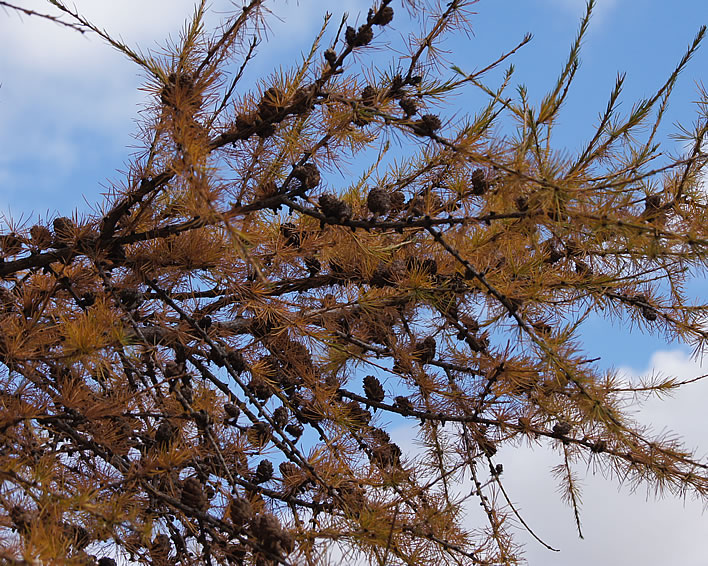
The following three photographs show larch saplings taking over the edges of the relatively recently enlarged road which runs along the lower edge of the larch forest described in the main article.
The parents of these saplings are located a short way back at the edge of the wood – what we are seeing is the wood spreading outwards.
For most of the year these small larch saplings would go unnoticed, but the bright autumn glory which they share with their parents makes them stand out and brings home to us just what a successful pioneer tree the larch is.
The pioneering larch quickly colonises fresh, rough and rocky ground and is particularly happy at altitudes which defeat most other trees.
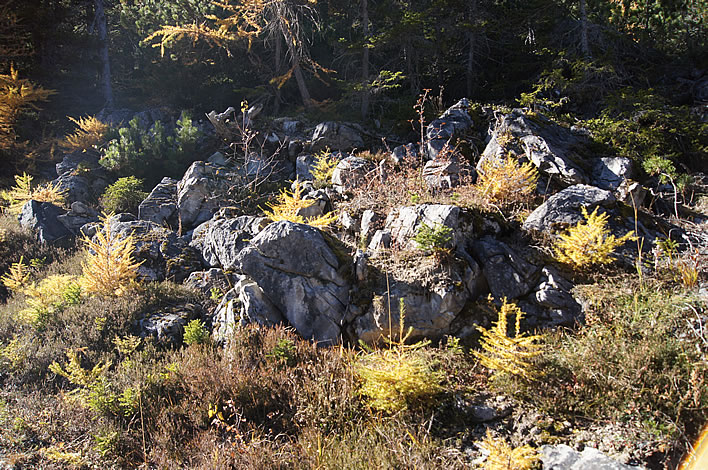


Ecology
Larch trees like water, but the running, not the standing sort.
The larch forest featured in the main article has grown on the limestone rubble that tumbled down from the mountain at the beginning of the Holocene epoch, following the retreat of the glaciers of the last ice age (c. 10,000 YBP). The glaciers left behind steep-sided, U-shaped valleys, the sides of which crumbled and collapsed when the supporting ice had gone.
The ground here is full of cavities and forms a large reservoir of underground water which feeds the many streams, large and small, which rush down to the valley.
Facing us on the opposite side of the valley we can see a striking line of larches descending from the treeline. This line is following the steep gorge of a mountain stream, the Val Bunga. Here there is altitude, rough terrain and plentiful running water – just what larches like. You can see how successfully they have made this unpromising feature their home.
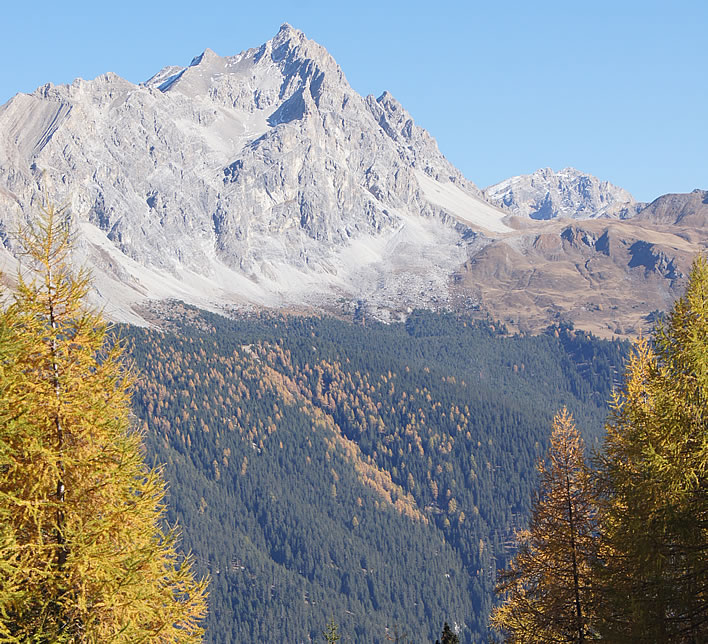
Where the torrent reaches the gentle slopes of the valley bottom a larch wood (simply called Lareschs, 'Larches') has grown up. The valley bottom is useful agricultural and building land, so the larch wood has been constrained down the years more or less to its current limited extent.
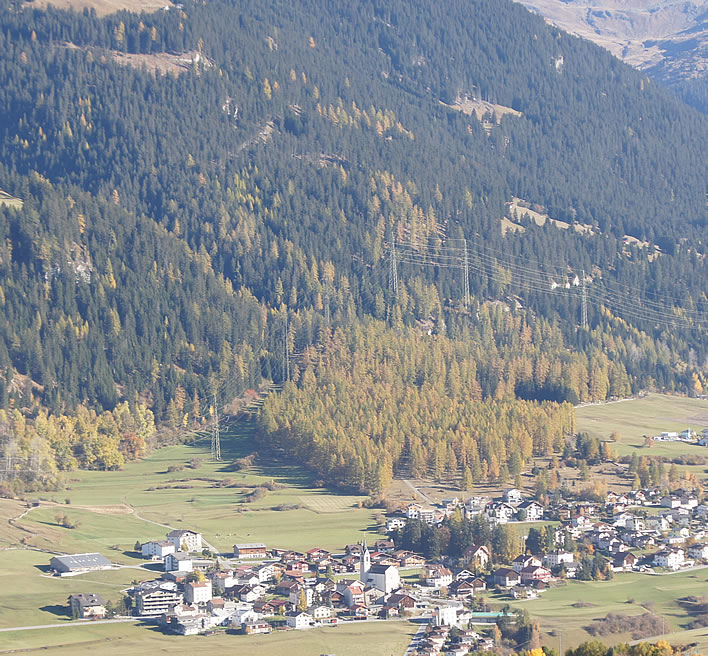
Utilisation
Larches are long-lived trees which can survive for several centuries. For a coniferous tree, the wood of the larch is particularly hard, durable and weather-resistant, thus an ideal building material. For example, the best shingles for external cladding are cut from larch wood.
The barns and houses in the two hamlets on the edge of our larch wood at 2,000 metres (6,500 feet) show how well and elegantly this wood weathers, even in this challenging climate.
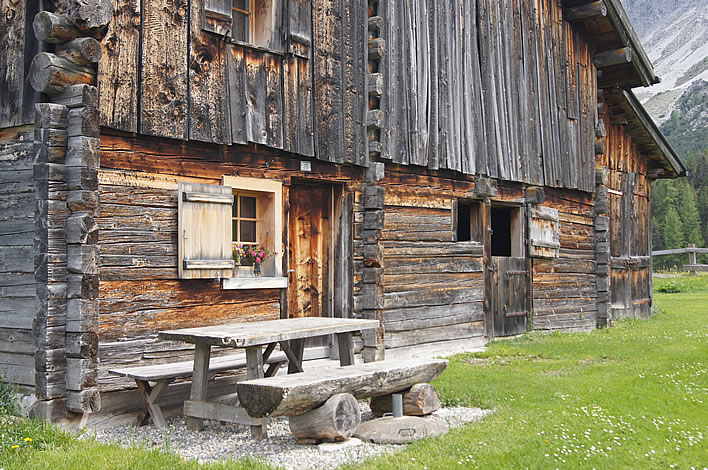
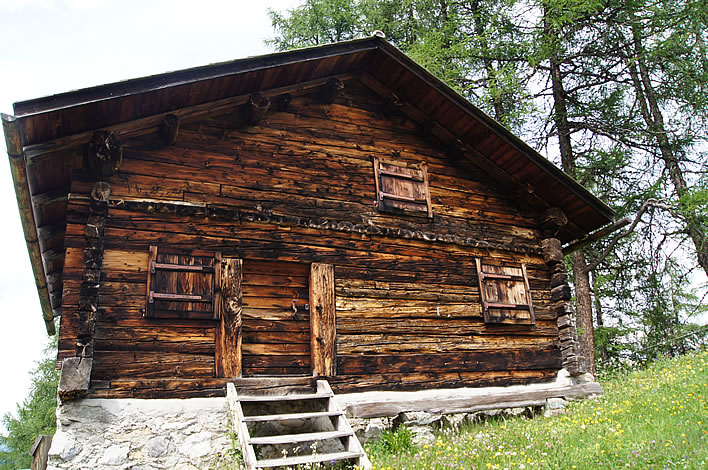
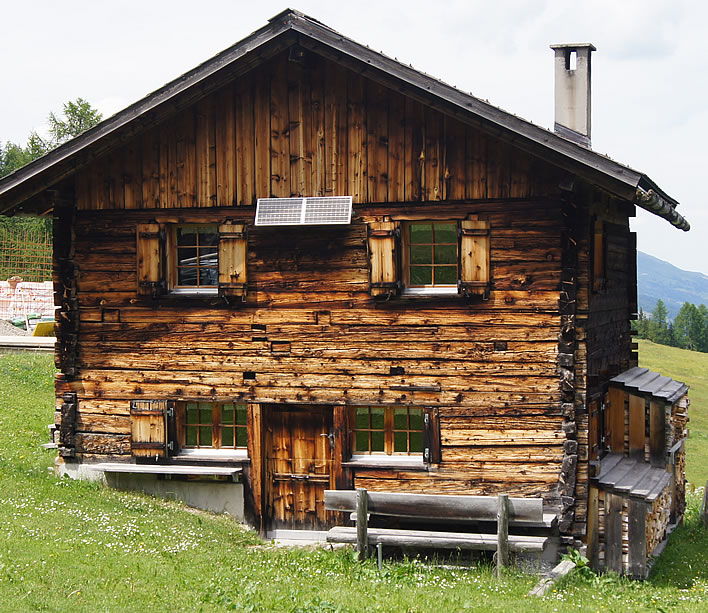
0 Comments UTC Loaded:
Input rules for comments: No HTML, no images. Comments can be nested to a depth of eight. Surround a long quotation with curly braces: {blockquote}. Well-formed URLs will be rendered as links automatically. Do not click on links unless you are confident that they are safe. You have been warned!